Review: Heartstopper, "Love" & "Home" | Season 3, Episodes 1-2
A show about love conquering hate explores the limits of that love
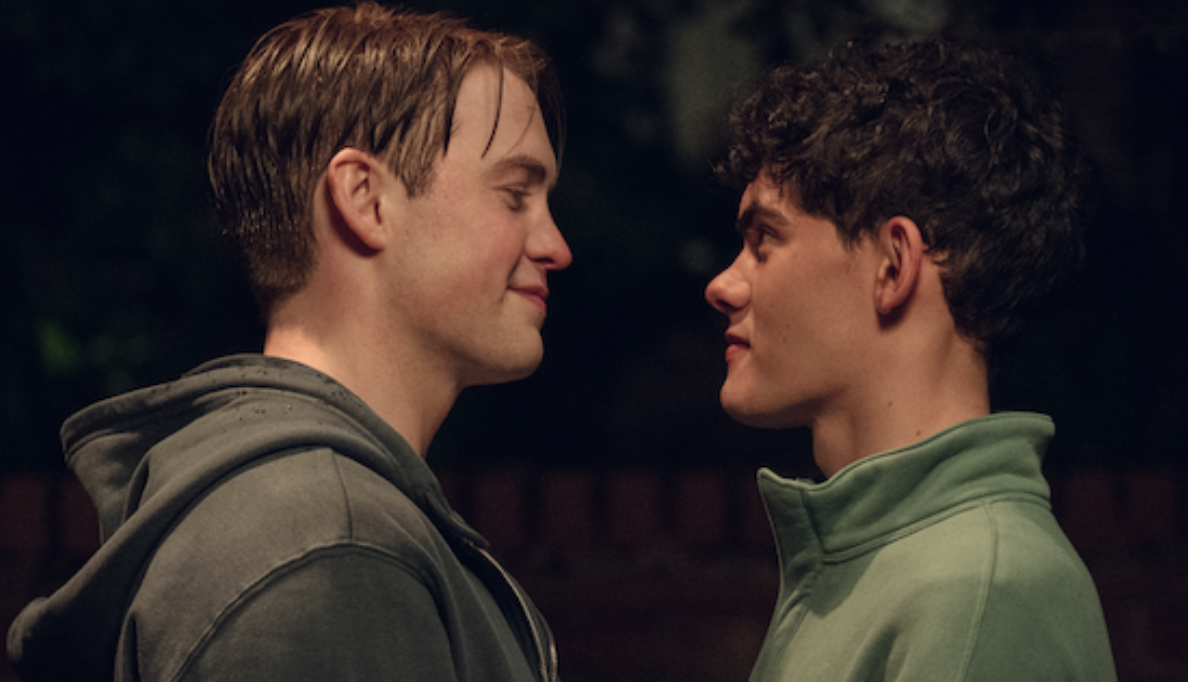
Welcome back to Episodic Medium’s coverage of Netflix’s Heartstopper. This first review is free for all subscribers, but subsequent reviews—which will be released as I can watch each pair of episodes—and the comments will exclusively be for paid subscribers. To see what else we’re covering this fall, check out our full schedule.
“Why are we like this?”
When I first picked up the first volume of Heartstopper, I remember being confused by the book’s openness about the story being told:
Boy Meets Boy
Boys Become Friends
Boys Fall in Love
The actual story of the first volume doesn’t act as though Charlie and Nick’s relationship is inevitable—heck, Nick doesn’t even know he’s queer yet. And when I Googled looking to confirm this language (my copy is on the other side of the house, I’m being lazy), I discovered Oseman’s initial art for the Kickstarter for the printed version of their webcomic included vaguer language:
“Charlie, a highly-strung, openly gay over-thinker, and Nick, a cheerful, soft-hearted rugby player meet at a British all-boys grammar school. Friendship blooms quickly, but could there be something more…?”
Something changed once formal publishers became involved, though, and since that point Heartstopper has actively been promoted as the story of Nick and Charlie falling in love. That said, the Netflix marketing tried to go back to a bit more uncertainty, replacing the book’s slogan with “Love Meets Doubt, Fear Meets Joy, Boy Meets Boy.” But by the time the show became a massive phenomenon, which only happened after it premiered, it was the Gay Teens Fall in Love show, and that cultural footprint has fundamentally shaped our understanding of it.
I raise this point because Oseman’s adaptation of her work is entering a stage where it’s exploring the limits of that love, by necessity. The first season used Nick and Charlie’s love story as its anchor, and the second season found its structure in Nick’s coming out narrative and the power of their love in helping him navigate that challenge. The show also fully paired up the “Core Six” in season two, and while all three relationships have faced challenges, there’s no room to question them. It’s a show where every relationship is an OTP because the emotional earnestness is too powerful to question it.
So it’s not a question of love being a lie, but rather an acknowledgment that sometimes love isn’t enough (or, in Isaac’s case, it doesn’t work for him in the way it does for others). Tara and Darcy are deeply in love, but living together doesn’t give them their own space, and Tara no doubt feels the pressure of filling the vacuum of family created by Darcy’s terrible parents. The solution isn’t “breaking up,” and the characters never question the core of their love—Tara just suggests that maybe Darcy moving in with her grandmother would be the best thing for their relationship. Tara and Darcy have a mature conversation, Mae from Ted Lasso pops in as a kooky grandma, and other than some looming GCSE drama the show’s longest-standing relationship remains solid even if love doesn’t fix everything.

The same is true for Tao and Elle, who are racing against time with Elle’s looming departure for her art school. Tao’s theory is that as long as they fill every moment of their last three weeks together with every romantic gesture imaginable, their love will persevere across their separation. It’s never really clear how separated they’re going to be—is that a boarding school, or is she commuting?—but that’s the point: it’s about his perception of separation, and that anxiety manifesting as a squirrel frantically storing love acorns for a long winter. It all seems a bit much, but it comes into focus more when a camcorder unlocks some new details about Tao’s father, and you realize how much someone who ran out of time with someone they loved starts to understand love as a finite resource.
If Heartstopper is a show about love, then these secondary couples are Oseman’s way of exploring the dimensionality of those experiences, and there’s a risk there of the couples feeling more like props for the story than real characters. The show gets closest to this when it gets into its habit of underlining and bolding the themes of a story: all of those elements of Tao and Elle’s story are evident in the filmmaking and the subtleties of their interactions, but things become a bit over-obvious when the characters start spelling everything out. But much as that sometimes leads the show into a pedantic tone, it also represents its basic thesis: people would be better off if they said what they were feeling, and if their hearts were animated on their sleeves. Those scenes might not always be my favorite, but they’re critical for creating a borderline fantastical space where it really feels like love can be more powerful than grief, or doubt, or fear.
They’re also critical because not every story is going to be able to resolve as easily as those do. I’m not saying that Tara/Darcy and Elle/Tao won’t have episodes where love doesn’t bring them to a happy moment of resolution when conflict arises, but right now they’re necessary balance when everything with Nick and Charlie is fraught. Even though “Love” ends with the couple declaring the titular emotion to one another, there’s never a real sense in the narrative that it’s going to resolve the tensions surrounding Charlie’s eating disorder. Charlie wants to pretend that’s what happened, and Nick hopes that will happen, but the latter spends all of “Home” away from his, and watches from afar as Charlie drifts further away from him and the rest of their chosen family. This may be a love story, but it’s not one where saying “I love you” is going to be the climax that resolves a conflict: it’s going to live alongside it, co-existing with a darkness that can’t be so easily dispelled.
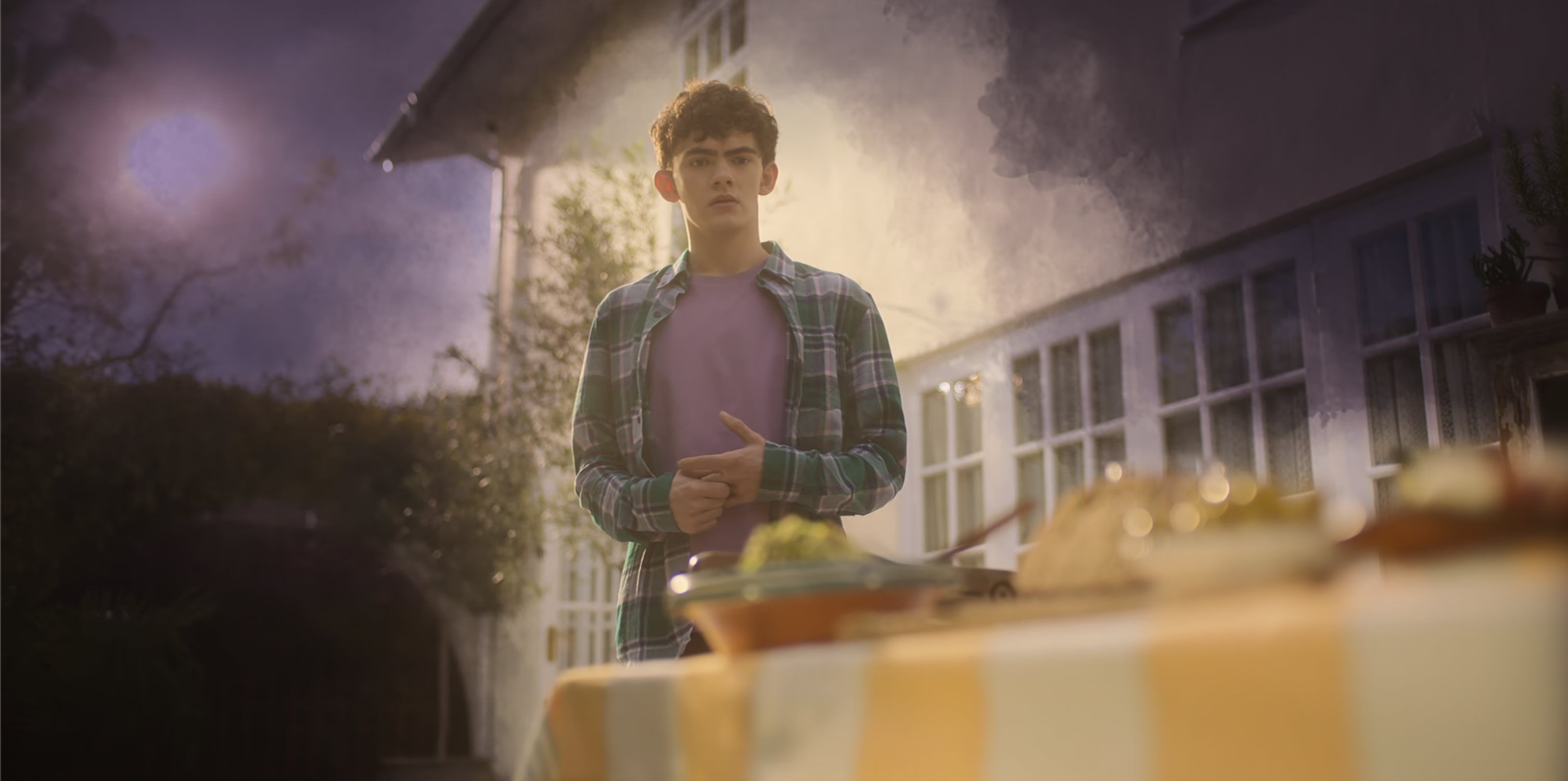
The show has always used its animated elements and graphic overlays to dive into bits of fantasy and nightmare in equal measure, but their use in “Home” is particularly compelling. As Charlie sits on his sofa early in the episode, with Nick away in Menorca, he fantasizes about the two of them together, kissing and declaring their love. But when we cut to Nick, he’s not fantasizing about Charlie being with him on vacation: he’s worried about his eating, and thinking about asking about it. And when Nick’s aunt and uncle suggest that Nick bring Charlie on holiday the next year, his thought process begins as a fantasy, but slowly morphs into a nightmare when the array of food on the table comes into focus. Much as love has its limits, so too do Heartstopper’s stylistic flourishes—the animated sparks can’t hide the truth about Charlie’s eating disorder, and communicating exclusively in emojis and thirst traps allows both Nick and Charlie to delay the conversation they know they need to have.
In Nick’s case, the push comes from his Aunt, a change from the books based on Olivia Colman being unavailable to reprise her role as Nick’s mum. When news broke about Colman being unable to make the scheduling work (she seemed heartbroken about it), fans immediately latched onto the fact it would force a chance to a pivotal scene. The way Colman’s character operated in the first two seasons was in many ways the author pulling forward the version of the character from the scene in Menorca, where Nick hears an important speech about some problems being bigger than love can solve. It’s an acknowledgment of the burden that Nick has placed on himself, and is a clear extension of his mother’s role in guiding Nick’s approach to their relationship—the story doesn’t work without it.
Oseman’s solution is ultimately a little overwritten from a setup perspective, but works when the moment comes. Haley Atwell is a worthy substitute, and brings the right energy to the conversation, but making Aunt Diane—who is on the trip in the book—a psychiatrist feels like an unnecessary added layer. I understand the logic: this is an intimate conversation about a tough subject, and the show has less than a half-hour to establish a relationship between the two characters. Creating the level of connection necessary for this disclosure is hard, and the psychiatrist dimension allows for the topic to be broached and for her expertise to be drawing more on the medical side than on the personal side. That said, there was something very Heartstopper about the fact that Nick’s mother was a philosopher of love and relationships based solely on her understanding of her son, and reframing that in any professional way lacks the same energy. But Atwell is great, Kit Connor continues to bring Nick’s struggles to life effectively, and it sets a clear path forward for this relationship evolving to address the darkness they can’t ignore anymore.

The Charlie side of that relationship is more or less the same as the books, minus the presence of show-created Isaac, who comes out as aromantic to Charlie and also feels the weight of being the only one not in a relationship. That story doesn’t really go anywhere beyond Isaac experiencing a lot of third-wheeling, but it helps frame Isaac’s concern for Charlie: he knows that Charlie is a good enough friend that he wouldn’t leave him hanging after the GCSE results if there wasn’t something going on, even if he doesn’t realize that it was the plan on Nando’s—food—that was a huge part of the problem. But the story is mostly still about Charlie’s home life, which seems to be his issue more than his friends: even though Tori is going out of her way to be supportive (although he doesn’t know she saw his web searches), Charlie is still convinced that his mother is never going to believe him.
I don’t know if Heartstopper has ever gotten a good grasp on Charlie’s mother. Some of this is just a problem of contrast: with a more prominent presence for Nick’s mum by way of Colman’s casting, Charlie’s mother is always going to seem worse by comparison. However, this is now compounded by the need for the story to hinge on Charlie’s doubt that her love will extend to trusting her son regarding his mental health. There’s a scene where Charlie storms out of the living room, leaving behind Tori and Charlie’s mother to have a scene that’s rare for each of them, in that Charlie is not present. And while Georgina Rich isn’t a bad actress, that moment between them stuck out to me: Tori’s insistence that she was being too harsh rang true, but his mother’s rushed “I never know what to say to him” feels disconnected, rote. While the adaptation has really fleshed out a lot of characters who were somewhat one-dimensional in the comic, Jane Spring isn’t among them, and I’m not sure how that will play out now that Charlie is openly acknowledging the truth about his anorexia.
Advance reviews—for those critics whom Netflix decided to acknowledge after laying off the show’s previous publicist—have acknowledged what readers of the comics already knew: this show is going to a darker place this season after reveling in love for two years. But as I noted back in my reviews of season one in the opening months of Episodic Medium, the show has always been acknowledging the darkness operating within Charlie Spring, and the foregrounding of that trauma early on created a better runway for his journey than the comics ever offered. I’m not excited to see where Charlie’s story goes, given the thematics, but I’ve got a lot of confidence in Oseman and Joe Locke to deliver on how that darkness fits into the show’s emphasis on light, and these opening episodes are a productive start toward completing that work and moving forward.
Stray observations
- Okay, so I know that Oseman isn’t a TV writer, but it’s incredibly disorienting to spend a decent amount of real estate on the Sahar/Imogen storyline at the end of the second season and then treat them as complete bystanders here. I presume we’ll circle back to them at some point, but their presence on the beach trip without any kind of unpacking is bizarre.
- I watched the season one trailer to embed it, and I apologize for feeling compelled to include it, because returning to the first season really creates some awkward feelings about how actively the show has oriented itself around objectifying Kit Connor’s body. Combine with the Romeo & Juliet content that’s made its way onto my TikTok FYP, and it’s just a bad time to be reminded how young he looked three years ago.
- It’s funny how much Heartstopper’s go-to when introducing new characters we’re meant to like is having someone come out to them and it being totally cool: we see it with Nick’s Aunt, and then again with Darcy’s grandmother, who’s just as happy to have a sexy lady on her walls.
- So I knew that Euros Lyn wasn’t returning to direct the third season, and I didn’t think this was a huge problem, but I was deeply distracted (read: personally attacked) by the lighting during the beach scenes in “Love.” Some of the shots made the background look like it was a green screen, and it seemed pretty clear they had to shoot Charlie’s side of the conversation in the ocean using flat lighting after shooting Nick’s coverage during actual golden hour. It just felt like there was an elegance of style absent in moments like those, and I’m hopeful Andy Newbery doesn’t run into similar problems throughout the season.
- That said, I did like the scene where Charlie remembered the context behind various photos on Nick’s wall before he said “I love you,” and the verisimilitude on the photos was good! But that was more a writing flourish of Oseman’s comic panel, ultimately, and one that nicely captured Charlie’s headspace there.
- Speaking of changes: the lighting thing was maybe more egregious, but I am so confused why Nick and Charlie went from using Instagram to text each other and switched to texting. The show still shows them using Instagram for its stories, but they just randomly switched platforms in the few weeks between seasons? I hope someone got fired for that blunder.
- The cute little moment between teachers Nathan and Youssef is probably as much as we’ll get on that relationship, but I’m hopeful we’ll keep getting pop-ins comparable to what Oseman has given them in the comics.
- Yes, if you were wondering, that was Jonathan Bailey in Charlie’s instagram stories. That cameo’s still forthcoming.
- Welcome back, everyone, to my coverage of Heartstopper. Is this one of the only binge shows we write about? Yes. Does the conversation necessarily always justify that? Probably not. Am I committed to doing it until the show concludes because it feels like a real part of the fabric of this project and my own relationship with popular culture and queerness? Yes. Did Netflix make this harder by refusing to respond to my emails asking for screeners, which means this will be paced closer to my The Bear coverage with a review every couple of days? Also yes. Thanks for reading, and if you’d like a place to converse about the show, future reviews will be for paid subscribers. Frustrations with Netflix PR aside, very much looking forward to discussing the show in the weeks ahead.
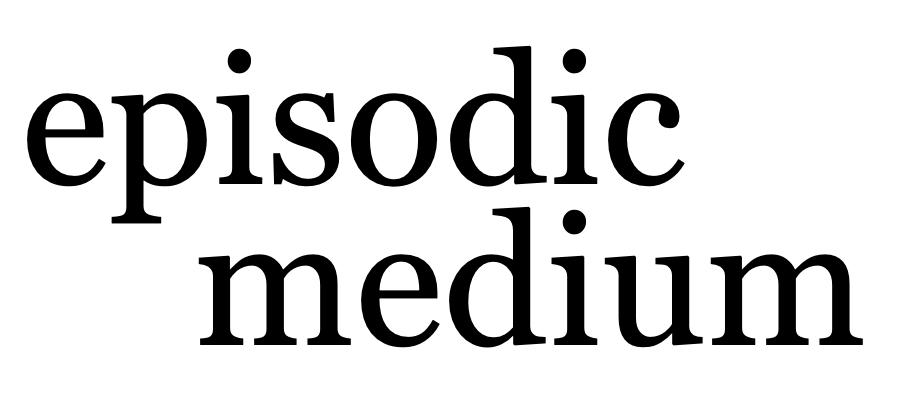
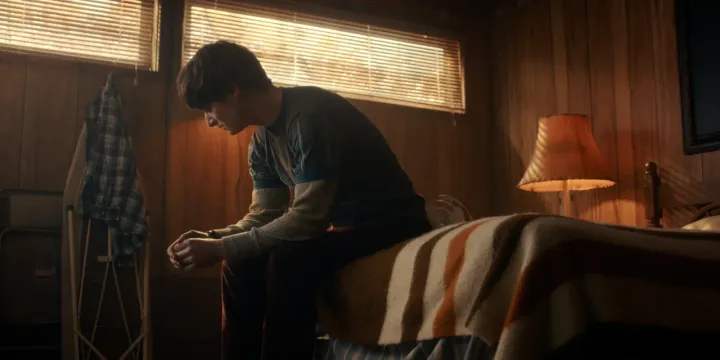
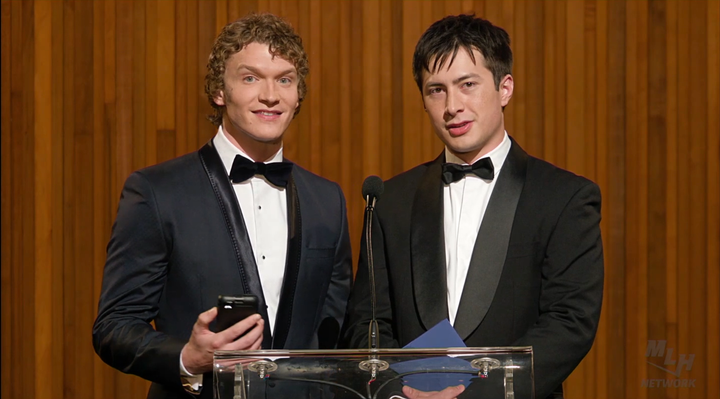

Comments ()